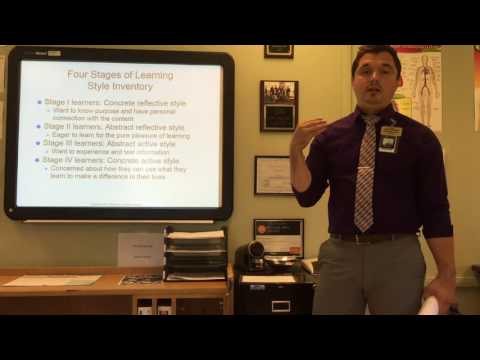Educational Competencies for the Medical Assistant
Contents [show]
If you’re considering a career in medical assisting, you’ll need to make sure you have the necessary educational competencies. Here’s a look at what you’ll need to know.
Checkout this video:
The medical assistant educational landscape
There are many variables to consider when deciding on the best educational route for aspiring Medical assistants Two of the most important considerations are the level of medical assistant training required by your state and whether you want to eventually earn clinical or administrative certification through a professional organization such as the American Association of Medical Assistants (AAMA).
Most states have no formal educational requirements for medical assistants, although some may require certification. The AAMA offers both administrative and clinical certifications, which generally require completion of an accredited program and passing a national exam. Whether you choose to pursue certification is up to you, but it may give you a competitive edge in the job market and could lead to career advancement opportunities.
If you do decide to pursue formal education, there are a variety of options available. Certificate programs typically take one year or less to complete, while associate’s degree programs generally take two years. Some community colleges offer medical assistant programs that can be completed in as little as nine months.
No matter what level of education you ultimately choose, it’s important to make sure your program is accredited by either the Commission on Accreditation of Allied Health Education Programs (CAAHEP) or the Accrediting Bureau of Health Education Schools (ABHES). These accrediting bodies ensure that medical assistant programs meet certain quality standards.
The core competencies for medical assistants
Medical assistants are an integral part of the healthcare team. They provide clinical and administrative support to physicians, nurses, and other members of the healthcare team. They are responsible for a variety of tasks, including taking medical histories and vital signs, preparing patients for examinations, assisting with procedures, and providing patient education.
To be successful in this role, medical assistants must have a strong foundation in the core competencies of medical assisting. These competencies include communication, customer service, ethical and legal issues, Infection control, medical office procedures, patient education, safety, and scheduling.
Medical assistants must be able to effectively communicate with patients, families, and members of the healthcare team. They must be able to understand and respond to physician orders and provide quality customer service. They must be able to maintain confidentiality of patient information and adhere to ethical and legal standards. They must be able to demonstrate proper infection control techniques and understand medical office procedures. They must be able to educate patients about their condition or procedure and provide instructions on follow-up care. They must be able to identify potential safety hazards in the workplace and take steps to prevent injuries. Finally, they must be able to efficiently schedule appointments and coordinate laboratory tests and other diagnostic procedures.
The importance of medical assistant education
Medical assistants are a vital part of the healthcare team. They play a critical role in patient care and satisfaction, as well as in the overall efficiency of the medical practice. As such, it is imperative that medical assistants be properly educated and trained to perform their duties in a competent and professional manner.
There are a number of educational pathways that can lead to a career as a medical assistant. The most common is to complete an accredited postsecondary medical assisting program. These programs typically last one year or less and prepare students to take the Certified Medical Assistant (CMA) exam, which is required to earn the CMA credential.
While not all states require medical assistants to be certified, most employers prefer or require certification as evidence of the medical assistant’s competency. In addition, some states have their own certification requirements for medical assistants.
The CMA credential is earned by passing the CMA exam, which tests knowledge in both clinical and administrative areas. To sit for the exam, candidates must have completed an accredited medical assisting program or have at least five years of experience working as a medical assistant. The exam consists of two parts: a written section and a clinical skills section. Candidates must pass both sections to earn the CMA credential.
After successfully completing an accredited medical assisting program and passing the CMA exam, medical assistants can choose to pursue additional education and training to specialize in a particular area of practice, such as pediatrics or ophthalmology. Specialized training is not required to work as a medical assistant, but it may give candidates an edge when applying for jobs in certain settings or with certain employers.
The benefits of medical assistant education
Medical assistant education prepares individuals for a career in healthcare. The medical assistant occupation is one of the few that continues to grow in demand, due in part to an aging population and advances in medical technology. As a result, medical assistants are in high demand across the country.
Medical assistant education provides students with the knowledge and skills necessary to perform their duties in a variety of settings, including hospitals, clinics, and physician’s offices. Medical assistants are responsible for a variety of tasks, including taking medical histories and vital signs, preparing patients for examinations, assisting with procedures, scheduling appointments, and billing patients. In addition to providing quality patient care, medical assistants must be able to work well under pressure and maintain a professional demeanor at all times.
Medical assistant programs typically last between one and two years and lead to a certificate or associate’s degree. Many programs include an externship component, which gives students the opportunity to gain real-world experience prior to graduation. Some larger employers may require medical assistants to have completed a nationally accredited program, such as those offered by the Commission on Accreditation of Allied Health Education Programs (CAAHEP) or the Accrediting Bureau of Health Education Schools (ABHES).
The challenges of medical assistant education
The challenges of medical assistant education are many and varied. Perhaps the biggest challenge is the sheer number of competencies that medical assistants must master. While there are only a few core competencies that all medical assistants must possess, the specific competencies required will vary depending on the type of practice in which they work. For example, a medical assistant working in a primary care setting will need to be able to perform basic phlebotomy and electrocardiogram (EKG) procedures, while a medical assistant working in an ophthalmology office will need to be able to perform basic eye examinations.
Another challenge is the fact that medical assistants must be able to effectively communicate with both patients and physicians. This can be difficult, as medical terms can often be confusing to patients, and physicians can be very busy and have little time to explain things in detail. Medical assistants must be able to bridge this gap and ensure that both parties understand what is going on.
Finally, medical assistants must be able to juggle multiple tasks at once. They may be responsible for scheduling appointments, handling laboratory results, taking patient histories, performing physical examinations, and more. Being able to effectively manage one’s time and prioritize tasks is essential for success in this field.
The future of medical assistant education
If you are interested in becoming a medical assistant, or are already working in the field, you may be wondering about the future of medical assistant education. With the ever-changing landscape of healthcare, it is more important than ever for medical assistants to be up-to-date on the latest trends and technologies.
While there is no one-size-fits-all answer to this question, there are some general trends that can be seen in medical assistant education. One trend is an increase in online and hybrid (online/in-person) programs. This is due to the fact that many people are now working full-time while also attending school, and online programs offer greater flexibility.
Another trend is an increase in the use of simulations and hands-on learning opportunities. This is because employers are looking for candidates who have experience with the latest technology and equipment. By offering simulations and hands-on learning opportunities, schools can give students the chance to learn on real equipment and gain experience with new technologies.
Finally, there is a trend towards programs that offer specialized training in specific areas of medicine. This is because employers are looking for candidates who have expertise in specific areas, such as geriatrics or Pediatrics. By offering specialized training, schools can help students stand out from the competition and make themselves more attractive to employers.
The impact of technology on medical assistant education
While there is no one-size-fits-all answer to the question of how technology should be used in medical assistant education, it is clear that technology can have a profound impact on the way medical assistants learn and perform their duties. Here are some ways that technology can impact medical assistant education:
1. Technology can provide a more immersive learning experience.
Medical assistants who are able to use technology to simulations and other immersive learning experiences will be better prepared to handle real-world situations.
2. Technology can help medical assistants keep up with changes in the medical field.
The rate of change in the medical field is accelerating, and medical assistants who are able to use technology to stay up-to-date with new developments will be better positioned to provide quality patient care.
3. Technology can helpmedical assistants improve their efficiency.
Medical assistants who are able to use technology to streamline their workflow will be able to see more patients and provide better care.
4. Technology can helpmedical assistants communication with patients and colleagues.
Medical assistants who are able use technology for patient education and communication will be able to build better relationships with patients and colleagues.
The role of medical assistant education in healthcare reform
In order to meet the challenges posed by healthcare reform, medical assistants must be educated to competency standards that reflect the knowledge and skills they need to provide safe, high-quality patient care. The Medical Assistant Education Review Board (MAERB) has developed a set of educational competencies that outline the minimum level of knowledge and skills required of medical assistants.
These competencies are organized into three domains: administrative, clinical, and interpersonal/professional. All medical assistant programs accredited by the Commission on Accreditation of Allied Health Education Programs (CAAHEP) are required to curriculum that meets these competencies.
The role of medical assistant education in healthcare reform is to prepare students to be competent members of the healthcare team who can contribute to providing safe, high-quality patient care.
The role of medical assistant education in patient care
The role of medical assistant education in patient care is to provide students with the necessary knowledge and skills to perform their duties in a safe and effective manner. Medical assistants are tasked with providing basic patient care, administering medication, and performing administrative duties in medical offices and clinics. In order to be successful in these roles, medical assistants must have a strong understanding of human anatomy and physiology, as well as Medical Terminology In addition, medical assistants must be able to communication effectively with patients and other healthcare professionals.
While many medical assistants complete on-the-job training, some states require that medical assistants complete an accredited education program before being eligible for certification. Certification is not required in all states, but it can give medical assistants a competitive edge when applying for jobs. Most accredited programs take between one and two years to complete, and they include both classroom instruction and clinical experience.
The role of medical assistant education in the medical profession
Medical assistants play a vital role in the medical profession, providing support to physicians and other medical staff. As such, it is essential that medical assistants have the necessary education and training to perform their duties effectively.
There are a number of different educational programs available for medical assistants, ranging from certificate programs to two-year associate’s degree programs. While the specific curriculum of each program may vary, all medical assistant programs should provide students with the knowledge and skills needed to perform the essential tasks of the job. These tasks include taking medical histories and recording vital signs, preparing patients for examination, assisting with diagnostic procedures, providing patient education, and performing basic laboratory tests.
In addition to having the necessary technical skills, medical assistants must also be able to communicate effectively with patients and other members of the healthcare team. They must have a good understanding of medical terminology and be able to keep accurate records. As member of the healthcare team, they must be able to work well under pressure and handle a variety of tasks simultaneously.
The role of medical assistant education is thus two-fold: to provide students with the technical skills and knowledge needed to perform their job duties effectively, and to prepare them for the challenges they will face in the real world. With proper education and training, medical assistants can make a valuable contribution to the medical profession and provide essential support to patients and physicians alike.







